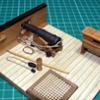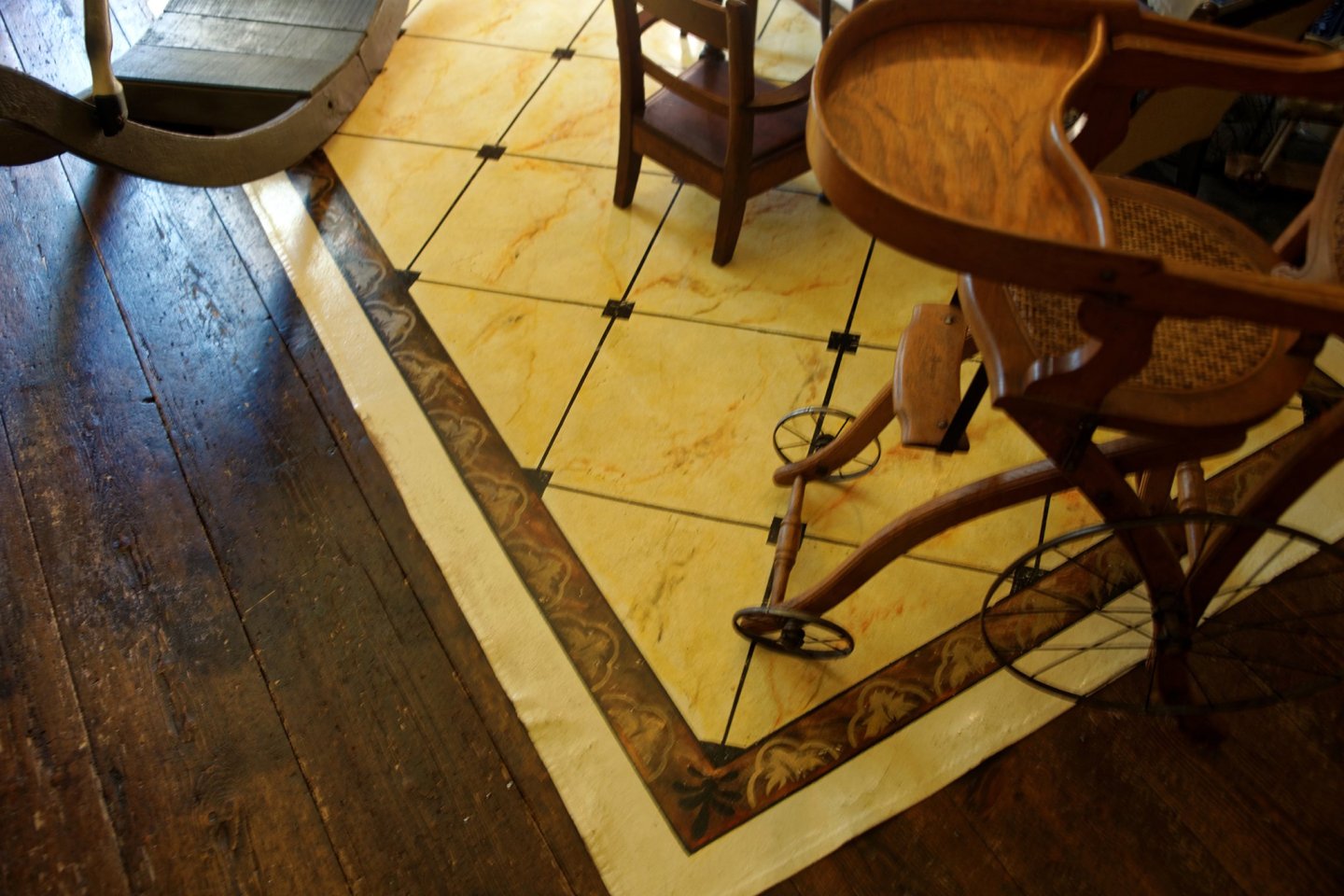-
Posts
5,939 -
Joined
-
Last visited
Content Type
Profiles
Forums
Gallery
Events
Everything posted by BANYAN
-
Sorry to hear of the trials and tribulations during your canal excursion Keith - I can understand the problems. My wife will not allow me to get on the roof for the regular maintenance these days; she says I have lost 'me sea legs'. Getting older 'sucks' . No rush on your model progress mate, family and friends must always take precedence. cheers Pat
-
Quite the collection you have of unusual early ships Steven. I have enjoyed following along, especially the excellent model resulting from your reseach. cheers Pat
- 508 replies
-
Sounds good to me looks like Keith has you covered cheers Pat
- 185 replies
-
- Flying Dutchman
- Black pearl
-
(and 2 more)
Tagged with:
-
Hi Sizzolo, are you talking about the gratings/duck boards in the bottom of ship's boats? These came in two types as far as I am aware, but there are more experienced/knowledgeable people on this forum who may correct this. Type 1 was constructed from widely spaced simple slats/planks laid longitudinally and shaped to conform with the inside of the hull. This may have required them being made in separate parts, or checke3d in around major ribs, stringers and the like. Type 2 was constructed the same as a ship's hatch covering. These were made with a smaller grid (smaller battens and crosspieces, and laid the same as the slat type. Are these what you are talking about? Also some gigs and pinnaces, used as the Admiral/Captain's barge/boat, had more elaborate furnishing and fittings. It is possible that the oiled canvas mats, similar in decor as the Captain/Admirals cabins, and as suggested by @barkeater were also used in their boats. The mats will simply have been laid/put down over the boat's decking. Obviously, these will have been of a much smaller size and grid pattern. I have attached a piccy I took in a fancy heritage house in Hobart, Tasmania which used painted canvas mats which look quite good IMHO. While this is much fancier than the typical checkerboard pattern it shows what they will have looked like. Hope this helps? cheers Pat
-
Great project idea Glen. Now I fully expect to see the motley crew, especially Jack Sparrow, as part of this one Look forward to seeing this one develop. cheers Pat
- 185 replies
-
- Flying Dutchman
- Black pearl
-
(and 2 more)
Tagged with:
-
Nice job Steven, looks good. WRT belaying points, some lines could be brought to the same point. This is especially true for all the lines used to control the sail being brought to a common belaying point so that a sailor could grab them in hand all at once (as all those lines needed to be worked togeher). Not sure if applicable tour build but would make an appropriate story/yarn? cheers Pat
- 508 replies
-
I think you may be a little harsh on your build efforts Eberhard; from my perspective I don't think there is much you could improve on. cheers Pat
-
Hi John and Keith, those were my immediate thoughts also - a fairlead for guiding/controlling lines led from forward. Did she have a capstan aft? One of the issues we had when losing power to the main capstan was raising the anchor by hand. We usually reverted to the tried and tested three-fold cable/deck tackles, but when possible tried to utilise other winches (such as boat /hawser winches) to assist such tasks. These required a long unobstructed lead, so having fairleads would be beneficial? In reverse, the lead may be used to lead a messenger to the capstan from aft for bringing in a tow rope or the like? Just brainstorming here cheers Pat
-
An exquisite model Eberhard. It really is a showcase for your skills and attention to detail. I very much enjoyed the journey of the build. cheers Pat
-
Looks good Steven. Another method I've heard of is to use small weighted bags (filled with sand or the like) - make the bag from scrap cloth to size. The natural bellying of the bag sort of coincides with the bellying of a sail. I have not tried it myself, simply passing on a tid-bit I've read somewhere. I've also heard of the method suggested by Druxey; either should work I think. cheers Pat
- 508 replies
-
Ah the joys and tribulations of redos Very nice recovery job though. cheers Pat
- 110 replies
-
- Paddlewheeler
- Ballarat
-
(and 3 more)
Tagged with:
-
A big pat on the back for yourself Steven; looks great! cheers Pat
- 508 replies
-

Floor and frame spacing
BANYAN replied to BANYAN's topic in Building, Framing, Planking and plating a ships hull and deck
Thanks Eberhard, appreciated the continued feedback. I agree, closer where load and stress would be greatest but agree, differing spacing is difficult to accept. However, it seems this was implements as it was specified in the build Specifications and drawn in Lang's plans. Also, yep as best as I can tell they were steamed into pretty sharp 'U' bends. These timbers replaced the shadow moulds used to form the diagonal planking and were smaller in dimension than regular frames would have been. Several authors writing about wood ship construction in the latter half of the 19thC mention bent timbers and their writing supports/infers bent rather than jointed timbers. The hull construction was very different hence all this confusion, as there is not much in the way of reference materials to provide guidance too many assumptions having to be made by myself for my liking at the moment. cheers Pat -
Hi Jerome, there are others also writing in this era, including: Robert Kipping (as per John above) - "Rudimentary Treatise On Masting and Mast Making" 1853/1854/1858 editions John Fincham "A Treatise on Masting Ships and Mast Making" 1854 G.S. Nares (Commander, RN) "Seamanship" - 1868 More related to USN is: SB Luce "Seamanship" - 1868, and Brady "The Kedge Anchor" - 1852 edition Most of these are available as digital copies (PDF) produced by Google. The search engines now try and point you to 'print on demand' or paid versions, but if you persevere and look further down you can still find the free pdf versions easily enough. cheers Pat
-

Floor and frame spacing
BANYAN replied to BANYAN's topic in Building, Framing, Planking and plating a ships hull and deck
Thanks for responding Eberhard. Yes I have consulted several contemporary authors including Fincham, Peake and Scott-Russell. All speak in general terms and there are very few diagrams/illustrations showing framing of this time. Where there is framing discussion, unfortunately it is for standard construction and not that using bent timbers in lieu of frames and no one speaks of differing frame spacing. That is 2, 3 and 4ft spacing in the same vessel - these authors tend to suggest a regular spacing, which in this time is said to be between 2'7" and 3' 6", one set of spacings throughout. My question is really in terms of general convention and probably only able to be answered in subjective terms - that is, where do people think the more dense/closer (i.e 2ft) spacing is most applicable? Thanks again Pat -

Floor and frame spacing
BANYAN replied to BANYAN's topic in Building, Framing, Planking and plating a ships hull and deck
Bump! Any clues anyone? cheers Pat -
Hi all. I am in the midst of redrawing the plans for HMCSS Victoria (steam screw sloop) and wishing to add some additional details. Unfortunately, due to copyright issues, I cannot post the plan here. Please Note: These questions relate to ship building practices of the mid-19th century. The Specification for her build required floor (centres) to be spaced 2, 3 and 4 feet apart as shown on the 'section' drawing. Unfortunately this drawing/plan has been lost and they are not shown on the profile/sheer plan. Additionally, the bent timbers (in lieu of frames) were to be placed midway between the floors, and the spaces filled in solid. The floors only extended to the 'round' (or the head of the first buttock) due to the unusual way this vessel was built. The final bit of info I have found was a small tid-bit in the record of proceedings of a Court of Inquiry in which the Inspecting Officer (naval architect) in one of his responses stated the floors in the after part were about 2 feet apart. My questions: 1. What would be the likely spacing in various parts of the vessel? I have assumed that perhaps the keel between the rudder post forward to the forward bulkhead of the machinery space (combined stoke-hole & engine room) would have had 2 foot spacing, then forward of that to perhaps just forward of the pivot gun having 3 foot spacing and 4 feet ahead of that (to the start of the cant/half frames which was the most forward station shown on the existing plan)? 2. The floors were sided 12" and the bent timbers 8". The meat of the timbers would thus occupy 20" of the 24" spacing. This means the filler in these sections would be sided just 2" (x 12" moulded/deep). Is this viable/feasible do you think? Any comments or suggestions about this would be most gratefully received. cheers Pat
About us
Modelshipworld - Advancing Ship Modeling through Research
SSL Secured
Your security is important for us so this Website is SSL-Secured
NRG Mailing Address
Nautical Research Guild
237 South Lincoln Street
Westmont IL, 60559-1917
Model Ship World ® and the MSW logo are Registered Trademarks, and belong to the Nautical Research Guild (United States Patent and Trademark Office: No. 6,929,264 & No. 6,929,274, registered Dec. 20, 2022)
Helpful Links
About the NRG
If you enjoy building ship models that are historically accurate as well as beautiful, then The Nautical Research Guild (NRG) is just right for you.
The Guild is a non-profit educational organization whose mission is to “Advance Ship Modeling Through Research”. We provide support to our members in their efforts to raise the quality of their model ships.
The Nautical Research Guild has published our world-renowned quarterly magazine, The Nautical Research Journal, since 1955. The pages of the Journal are full of articles by accomplished ship modelers who show you how they create those exquisite details on their models, and by maritime historians who show you the correct details to build. The Journal is available in both print and digital editions. Go to the NRG web site (www.thenrg.org) to download a complimentary digital copy of the Journal. The NRG also publishes plan sets, books and compilations of back issues of the Journal and the former Ships in Scale and Model Ship Builder magazines.





